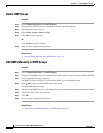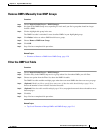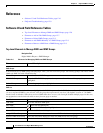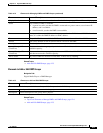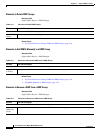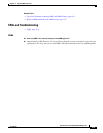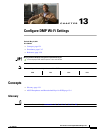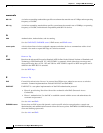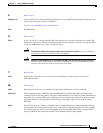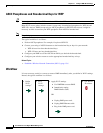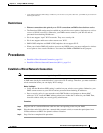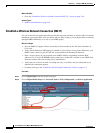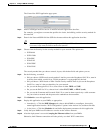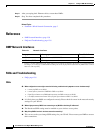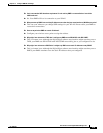
13-2
User Guide for Cisco Digital Media Manager 5.2.x
OL-15762-03
Chapter 13 Configure DMP Wi-Fi Settings
Concepts
numerals
802.11b
A wireless networking standard that specifies a maximum data transfer rate of 11Mbps and an operating
frequency of 2.4GHz.
802.11g
A wireless networking standard that specifies a maximum data transfer rate of 54Mbps, an operating
frequency of 2.4GHz, and backward compatibilitywith 802.11b devices.
A
AAA
Authentication, Authorization, and Accounting.
See also EAP-FAST, EAP-MD5 server, LEAP server, and PEAP server.
access point
A device that allows wireless-equipped computers and other devices to communicate with a wired
network. Also used to expand the range of a wireless network.
C
Return to Top
CCMP
Based on the Advanced Encryption Standard (AES) defined in the National Institute of Standards and
Technology's FIPS Publication 197, AES-CCMP is a symmetric block cipher that can encrypt and
decrypt data using keys of 128, 192, and 256 bits. AES-CCMP is superior to WEP encryption and is
defined in the IEEE 802.11i standard.
See also WEP keys.
E
Return to Top
EAP
Extensible Authentication Protocol. A protocol that WPA uses to authorize user access to wireless
networks. Common implementations include EAP-FAST and EAP-MD5.
EAP-FAST
EAP-FAST is a two-phase implementation of the EAP authentication protocol:
• Phase 0, provisioning. Provision client with a credential called PAC (Protected Access
Credentials).
• Phase 1, authentication. Use the PAC to establish a tunnel with the server and authenticate the
username and password.
See also AAA and EAP.
EAP-MD5 server
Servers that use EAP to provide dynamic, session-specific wireless encryption keys, central user
administration, and authentication between clients and access points. EAP-MD5 uses MD5 hashing on
client and challenge passwords.
See also AAA and EAP.



